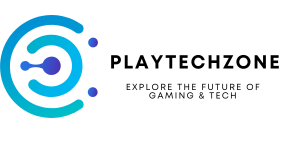By: Peter, Content Writer at Playtechzone.com
The world of digital art is undergoing a radical transformation, fueled by the rise of AI-powered text-to-image generators. These impressive tools, like Stable Diffusion and DALL-E 2, can conjure up stunning visuals from simple text prompts, blurring the lines between human and machine creativity. While this new frontier holds immense potential for artistic expression and innovation, it also presents a complex web of ethical, legal, and security challenges that we can no longer afford to ignore.
The Allure and the Anguish of AI Art Generators
Imagine typing in “a futuristic cityscape bathed in neon light” and having a detailed, captivating image materialize before your eyes within seconds. This is the allure of AI art generators. They empower anyone, regardless of artistic skill, to bring their visions to life. However, this accessibility comes at a cost.
The very technology that fuels these generators – deep learning algorithms trained on massive datasets of images scraped from the internet – is at the heart of the controversy.
Here’s a breakdown of the key issues:
1. Ethical Concerns:
- Artist Consent and Compensation: AI models are often trained on copyrighted artwork without the artist’s knowledge or permission. This raises concerns about fair use, attribution, and potential economic harm to artists whose livelihoods depend on their unique styles.
- Bias and Representation: Datasets scraped from the internet often inherit its biases, leading to the perpetuation of harmful stereotypes and the underrepresentation of certain groups in AI-generated imagery. For instance, a search for “CEO” might predominantly yield images of white men, reflecting existing societal biases.
2. Copyright Conundrums:
- Ownership and Authorship: The legal landscape surrounding copyright in AI-generated art is still murky. Who owns the copyright – the user who provides the prompt, the developers of the AI model, or the artists whose work was used in the training data?
- Commercial Use and Licensing: The ease with which AI can generate high-quality images raises questions about their commercial use. Can AI-generated art be copyrighted and sold? How do we ensure fair compensation for all parties involved?
3. Security Risks:
- Deepfakes and Misinformation: The same technology that powers AI art generators can be used to create incredibly realistic deepfakes, potentially fueling disinformation campaigns and eroding trust in online content.
- Malicious Use and Content Moderation: Open-source AI models, while democratizing access, also pose a risk of being exploited for malicious purposes, such as generating harmful or offensive content. This necessitates robust content moderation strategies and ethical guidelines for AI development.
Navigating the Uncharted Territory of AI Art
The challenges posed by AI art are complex and require a multi-pronged approach.
Here are some potential solutions:
- Ethical Data Collection and Training: Developers must prioritize ethical data sourcing practices, ensuring consent, attribution, and fair compensation for artists whose work is used in training datasets.
- Bias Mitigation and Representation: Efforts should be made to identify and mitigate biases in training datasets, promoting diversity and inclusion in AI-generated imagery.
- Legal Frameworks and Copyright Clarity: Clear legal frameworks are needed to address copyright ownership, attribution, and fair use in the context of AI-generated art.
- Content Moderation and Responsible AI Development: Robust content moderation strategies and ethical guidelines for AI development can help mitigate the risks of malicious use and harmful content generation.
The Future of Art in the Age of AI
The emergence of AI art generators marks a pivotal moment in the evolution of artistic expression. While challenges abound, it’s crucial to approach this new frontier with a spirit of collaboration and a commitment to responsible innovation.
Here are some key takeaways:
- AI art is here to stay, and its impact on the art world will be profound.
- Open dialogue and collaboration between artists, developers, policymakers, and the public are crucial for navigating the ethical, legal, and societal implications of AI art.
- By embracing ethical principles and fostering a culture of responsible AI development, we can harness the transformative power of this technology while safeguarding the rights and interests of all stakeholders.
Further Reading:
- The Verge: The AI art apocalypse is nigh
- Ars Technica: Copyright questions abound as AI art floods the internet
- World Economic Forum: How artificial intelligence is transforming the art world
The future of art is being written in algorithms, and it’s up to us to ensure that it’s a future where creativity flourishes, ethical considerations are paramount, and the benefits of this transformative technology are shared by all.
